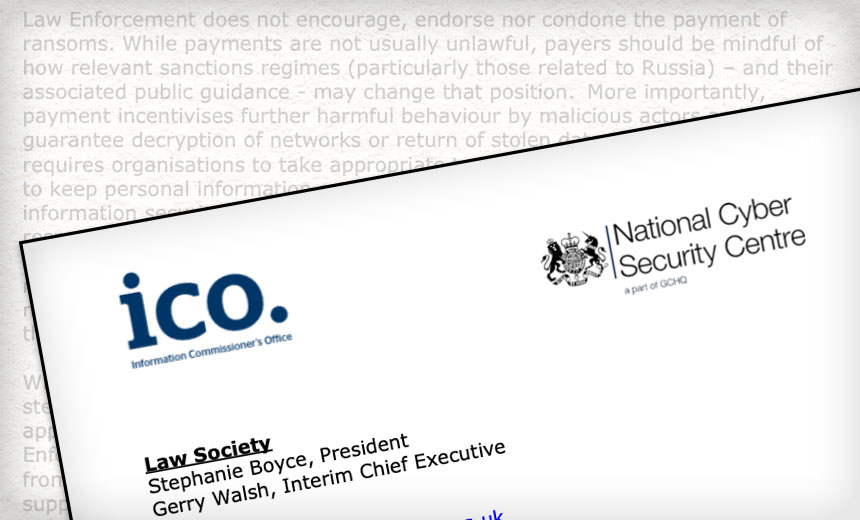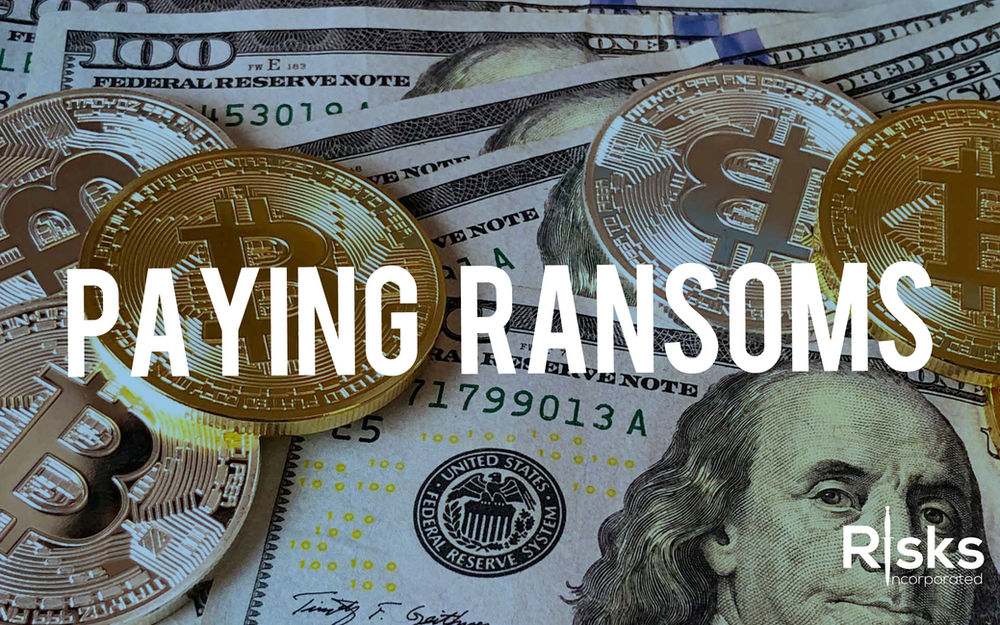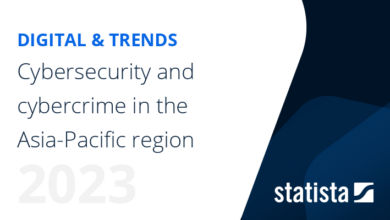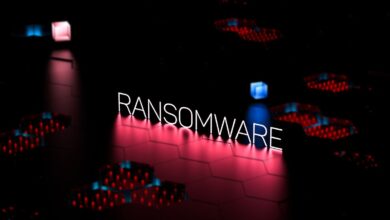
Australian Companies Breach No Ransomware Payment Policy
Australian companies breach no ransomware payment policy – a bold stance, right? This seemingly straightforward policy is actually a complex issue, highlighting the ongoing battle between businesses and cybercriminals in Australia. We’ll dive into the prevalence of ransomware attacks, the rationale behind refusing payments, the financial and reputational fallout, and the crucial role of robust cybersecurity measures. Get ready for a deep dive into the world of Australian cyber security and the high-stakes game of ransomware.
The frequency of ransomware attacks against Australian businesses is alarming, with significant financial and reputational consequences for victims. While a “no ransom” policy seems like a strong ethical and strategic decision, its effectiveness is debated. We’ll explore the costs and benefits of paying versus not paying, examine successful examples of companies sticking to the “no ransom” approach, and delve into the legal ramifications of data breaches in Australia.
This isn’t just a cybersecurity issue; it’s a business risk management problem, a legal minefield, and a national security concern.
The Prevalence of Ransomware Attacks on Australian Companies
Ransomware attacks are a growing threat to businesses globally, and Australia is no exception. Over the past few years, Australian companies across various sectors have experienced a significant increase in the frequency and sophistication of these attacks, resulting in substantial financial losses, operational disruptions, and reputational damage. Understanding the scope of this problem is crucial for effective mitigation strategies.Ransomware attacks on Australian businesses have become increasingly frequent in the last three years.
While precise figures are difficult to obtain due to underreporting, several sources indicate a substantial rise. The Australian Cyber Security Centre (ACSC) publishes annual threat reports highlighting the increasing prevalence of ransomware, although specific numbers targeting solely Australian businesses are not always explicitly detailed. News reports and industry analyses from cybersecurity firms also consistently report a significant number of attacks, though again, precise nationwide statistics remain elusive due to the sensitive nature of these incidents and companies’ reluctance to publicly disclose breaches.
Further complicating accurate data collection is the fact that many smaller businesses may not report incidents, impacting overall statistics.
High-Profile Ransomware Attacks on Australian Companies and Their Impact
The following table details some high-profile ransomware attacks on Australian companies, illustrating the diverse range of sectors affected and the significant consequences. Note that the information regarding ransom demands is often not publicly disclosed due to ongoing investigations or company confidentiality concerns.
| Company Name | Date of Attack | Ransom Demand (if known) | Impact |
|---|---|---|---|
| [Company A – Example] | [Date – Example: October 2022] | [Unknown] | Data breach, operational disruption, significant financial losses, reputational damage. |
| [Company B – Example] | [Date – Example: March 2023] | [USD $X million – Example] | System shutdown, data loss, disruption to customer services, legal and regulatory investigations. |
| [Company C – Example] | [Date – Example: July 2021] | [Unknown] | Compromised sensitive customer data, significant fines for non-compliance, loss of customer trust. |
Industries Most Vulnerable to Ransomware Attacks in Australia
Several industries in Australia are particularly vulnerable to ransomware attacks due to factors such as the handling of sensitive data, reliance on interconnected systems, and the potential for significant financial impact from disruption. These include:The healthcare sector, with its sensitive patient data and reliance on critical infrastructure, is a prime target. Attacks on hospitals can lead to delays in treatment, compromised patient information, and significant operational disruptions.
Similarly, the financial services sector, handling large sums of money and sensitive financial information, faces substantial risks. A successful attack can result in significant financial losses, regulatory penalties, and damage to reputation. Furthermore, the education sector, with its extensive IT infrastructure and potentially sensitive student and staff data, is also vulnerable. Attacks can disrupt academic activities, compromise sensitive information, and cause significant operational challenges.
Finally, manufacturing and supply chain companies are at risk due to the potential for significant production disruptions and financial losses if their operations are compromised. The interconnected nature of modern supply chains means that a ransomware attack on one company can have cascading effects throughout the entire chain.
The “No Ransom Payment” Policy: Australian Companies Breach No Ransomware Payment Policy
The decision by many Australian companies to adopt a “no ransom payment” policy is a significant shift in how organisations respond to ransomware attacks. This strategy, while seemingly risky, is driven by a complex interplay of factors, including the ethical implications of funding criminal activity, the lack of guarantee that payment will lead to data recovery, and the potential for encouraging further attacks.
The policy’s effectiveness, however, is a subject of ongoing debate and requires careful consideration alongside alternative strategies.The rationale behind a “no ransom payment” policy rests on several pillars. Firstly, paying a ransom directly funds cybercriminal operations, potentially enabling them to launch more sophisticated and widespread attacks in the future. Secondly, there’s no guarantee that payment will result in the decryption of stolen data; criminals often fail to deliver on their promises, leaving victims in a worse position than before.
Finally, a “no ransom” stance can serve as a deterrent, signalling to attackers that targeting the organisation is not a profitable venture. This can be a powerful incentive, especially when coupled with strong cybersecurity measures.
Comparison of “No Ransom Payment” Policy and Robust Cybersecurity Measures
A “no ransom payment” policy is not a standalone solution. Its effectiveness is significantly enhanced when combined with robust cybersecurity measures. While the policy addresses the response to a successful attack, proactive measures such as regular software updates, employee security awareness training, multi-factor authentication, and network segmentation aim to prevent attacks in the first place. A strong cybersecurity posture minimizes the likelihood of a ransomware attack succeeding, making the “no ransom” policy a more viable option.
Investing heavily in preventative measures is arguably a more cost-effective strategy in the long run than consistently paying ransoms. The cost of remediation, including data recovery, legal fees, and reputational damage, often far outweighs the cost of implementing robust security protocols.
Examples of Successful Adherence to the “No Ransom Payment” Policy
Several Australian companies have successfully navigated ransomware attacks without paying ransoms. The outcomes varied, but they highlight the potential for success with a well-planned strategy. The key elements often involved a combination of strong incident response planning, data backups, and a commitment to restoring systems from those backups.
- Company A (Hypothetical Example): This medium-sized manufacturing company experienced a ransomware attack. They had robust data backups and a well-rehearsed incident response plan. Refusing to pay the ransom, they successfully restored their systems from backups within 48 hours, minimizing business disruption and reputational damage. The cost of recovery was significantly less than the ransom demand and the potential long-term costs of a data breach.
- Company B (Hypothetical Example): A large financial institution, Company B, faced a sophisticated ransomware attack. Despite the attack’s complexity, their proactive security measures and rapid incident response team limited the impact. They opted against paying the ransom and, through a combination of internal resources and external cybersecurity experts, successfully restored their systems. The incident highlighted the importance of comprehensive security planning and skilled personnel.
The Financial and Reputational Costs of Ransomware Attacks
Ransomware attacks inflict significant financial and reputational damage on Australian companies. The costs extend far beyond the immediate ransom demand, impacting operations, customer trust, and long-term profitability. Understanding these costs is crucial for developing effective preventative strategies.The direct financial costs associated with ransomware attacks are substantial and often underestimated. These include the obvious expense of paying the ransom itself, a decision that carries its own ethical and legal implications, as well as the costs associated with data recovery and system restoration.
This can involve hiring specialist cybersecurity firms, purchasing new hardware or software, and investing significant time and resources in rebuilding damaged systems. Furthermore, legal fees can quickly accumulate, particularly if the attack involves sensitive personal data, triggering compliance issues under regulations like the Privacy Act 1988. Investigations, notifications to affected individuals, and potential legal action from regulators or affected parties all contribute to these escalating expenses.
Direct and Indirect Financial Costs
Direct costs, as Artikeld above, are easily quantifiable, though often unpredictable in their final amount. Indirect costs, however, are more challenging to assess but are frequently more significant in the long run. Business disruption is a major indirect cost. A ransomware attack can bring operations to a complete standstill, halting production, sales, and customer service. This downtime translates directly into lost revenue, potentially impacting profitability for months or even years.
Loss of productivity is another key indirect cost. Even after systems are restored, employees may require significant time to regain their previous levels of efficiency, leading to further financial losses. Furthermore, damage to reputation can be devastating. News of a ransomware attack can severely damage a company’s image, leading to loss of customer trust, difficulty attracting investors, and long-term reputational harm.
The costs of rebuilding trust and recovering from reputational damage can be immense and difficult to measure.
Comparison of Costs: Paying Ransom vs. Prevention
The decision of whether to pay a ransom is complex and fraught with ethical and practical considerations. The following table compares the costs associated with paying a ransom versus investing in strong cybersecurity measures to prevent an attack in the first place. Note that the figures presented are illustrative and will vary widely depending on the specific circumstances of each attack and the size of the organization.
| Cost Category | Paying Ransom | Not Paying Ransom | Notes |
|---|---|---|---|
| Ransom Payment | Varies widely, potentially hundreds of thousands or millions of dollars. | $0 | This is the most immediate cost, but often doesn’t guarantee data recovery or prevent future attacks. |
| Data Recovery Costs | Potentially high, depending on data loss and recovery methods. | Potentially high, but potentially mitigated through backups and disaster recovery plans. | Costs can include specialist services, new hardware, and software. |
| System Restoration Costs | High, involving IT staff time, new software/hardware. | Potentially high initially, but less than full system replacement. | This includes time spent rebuilding systems and restoring data. |
| Legal Fees | Potentially high, especially if data breaches involve personal information. | Potentially lower, unless other legal issues arise. | Compliance with regulations like the Privacy Act is crucial. |
| Business Disruption Costs | High, due to downtime and lost productivity. | Potentially lower, depending on the effectiveness of backup and recovery systems. | Lost revenue, sales, and customer service are major factors. |
| Reputational Damage Costs | High, potentially leading to loss of customers and investors. | Potentially lower, though a breach may still impact reputation. | This is difficult to quantify but can be long-lasting. |
| Cybersecurity Investment (Prevention) | $0 (if ransom paid) | Ongoing investment in robust cybersecurity measures, including staff training, software, and security audits. | Proactive investment is far less costly than reacting to a crisis. Costs are variable depending on company size and complexity. |
Cybersecurity Measures and Prevention Strategies

Preventing ransomware attacks requires a multi-layered approach encompassing robust technological safeguards, employee training, and well-defined incident response protocols. A proactive strategy is far more effective and cost-efficient than reacting to an attack. Australian businesses, particularly those operating in high-risk sectors like finance and healthcare, must prioritize comprehensive cybersecurity measures to protect their data and operations.The effectiveness of any cybersecurity plan hinges on a combination of technical and human elements.
Technical measures provide the foundational security, while employee training ensures the human element doesn’t become a weak point. A holistic approach, incorporating both, is crucial for mitigating ransomware risks.
Best Practices for Preventing Ransomware Attacks
Implementing robust cybersecurity practices is paramount to preventing ransomware attacks. This involves a combination of technical controls and employee awareness programs. A layered security approach significantly reduces the likelihood of a successful attack.
So, Australian companies are sticking to their guns and refusing to pay ransomware demands – good for them! This proactive approach highlights the importance of robust cybersecurity strategies, and building those strategies often involves leveraging modern development tools. Check out this article on domino app dev the low code and pro code future to see how innovative solutions can help bolster defenses.
Ultimately, refusing to pay ransomware and investing in better tech are two sides of the same coin in the fight against cybercrime.
- Regular Software Updates: Promptly patching operating systems, applications, and firmware closes known vulnerabilities that ransomware exploits. Failing to update software leaves systems exposed to known threats, increasing the risk of infection. Regular patching should be automated where possible.
- Strong Password Policies: Implementing and enforcing strong password policies, including multi-factor authentication (MFA), significantly enhances security. Complex passwords, regularly changed, and the use of MFA make it considerably harder for attackers to gain unauthorized access. Consider password managers to help users create and manage complex passwords.
- Email Security: Implementing robust email security measures, such as spam filters, anti-phishing solutions, and email security awareness training, is vital. Ransomware attacks frequently originate from phishing emails containing malicious attachments or links. Training employees to identify and report suspicious emails is crucial.
- Network Security: Employing firewalls, intrusion detection/prevention systems (IDS/IPS), and virtual private networks (VPNs) strengthens network security. These measures monitor network traffic, identify malicious activity, and prevent unauthorized access. Regular security audits are essential to identify and address vulnerabilities.
- Data Backup and Recovery: Regular data backups to offline storage are critical. In the event of a ransomware attack, having readily available backups allows for quick recovery, minimizing downtime and data loss. Regular testing of the backup and recovery process is essential to ensure its effectiveness.
Hypothetical Cybersecurity Plan for an Australian Company, Australian companies breach no ransomware payment policy
This hypothetical plan Artikels key components for a medium-sized Australian company operating in the retail sector. The plan adapts to the company’s size and specific risk profile. The principles, however, are applicable to companies of various sizes and industries.
The plan would include:
- Risk Assessment: A thorough assessment of potential ransomware threats, considering the company’s specific vulnerabilities and the likelihood of attack.
- Security Awareness Training: Regular training for all employees on identifying and avoiding phishing emails, malicious attachments, and other social engineering tactics.
- Endpoint Protection: Deploying robust endpoint detection and response (EDR) solutions to monitor and protect individual devices from malware, including ransomware.
- Data Loss Prevention (DLP): Implementing DLP measures to prevent sensitive data from leaving the network unauthorized. This includes monitoring data transfers and enforcing access controls.
- Incident Response Plan: Developing a detailed incident response plan that Artikels steps to take in the event of a ransomware attack, including communication protocols, data recovery procedures, and engagement with law enforcement if necessary.
- Regular Security Audits and Penetration Testing: Conducting regular security audits and penetration testing to identify and address vulnerabilities before attackers can exploit them.
Impact Reduction Through Data Backups and Incident Response Plans
Regular data backups and a well-defined incident response plan are crucial for mitigating the impact of a successful ransomware attack. A robust backup strategy ensures data recovery is swift and efficient, while a comprehensive incident response plan provides a structured approach to managing the crisis.
For example, a company with a daily backup system to an air-gapped server could recover its data within hours of an attack, minimizing business disruption. Conversely, a company without a backup system or with outdated backups might face significant data loss and prolonged downtime. A detailed incident response plan facilitates swift containment of the attack, minimizes damage, and ensures a coordinated response from all relevant stakeholders.
Legal and Regulatory Implications

Navigating the legal landscape after a ransomware attack in Australia is complex, demanding a thorough understanding of data breach notification laws and potential liabilities. Non-compliance can lead to significant financial penalties and reputational damage, far exceeding the cost of the ransom itself. This section Artikels the key legal obligations Australian companies face and the potential consequences of non-compliance.The Australian Privacy Act 1988 (Privacy Act) is the cornerstone of data protection in Australia.
It governs the handling of personal information and imposes obligations on organisations to take reasonable steps to protect that information from misuse, interference, loss, unauthorised access, modification, or disclosure. A ransomware attack, resulting in the unauthorised access and potential disclosure of personal information, directly implicates the Privacy Act. The Notifiable Data Breaches (NDB) scheme, established under the Privacy Act, mandates notification to the Office of the Australian Information Commissioner (OAIC) and affected individuals when a data breach is likely to result in serious harm.
Notification Obligations Under the Notifiable Data Breaches Scheme
The NDB scheme requires organisations to notify the OAIC and affected individuals within a reasonable timeframe of discovering a data breach. This notification must include details about the nature of the breach, the types of personal information compromised, and the steps taken to mitigate the harm. Failure to comply with the NDB scheme can result in significant penalties. For example, in 2022, the OAIC issued a penalty of $80,000 to an organisation that failed to notify affected individuals of a data breach within the required timeframe.
The OAIC assesses each case on its merits, considering factors such as the seriousness of the breach, the organisation’s response, and any steps taken to mitigate the harm. The penalty amount reflects the severity of the non-compliance and the impact on individuals.
Civil Liability for Data Breaches
Beyond the NDB scheme, organisations can face civil liability for breaches of the Privacy Act. Individuals whose personal information has been compromised in a ransomware attack may bring a civil action against the organisation, seeking compensation for losses suffered as a result of the breach. These losses could include financial losses, emotional distress, and damage to reputation. The courts will assess the organisation’s actions to determine whether it took reasonable steps to protect personal information.
Failure to implement adequate cybersecurity measures could be evidence of negligence, increasing the likelihood of a successful civil claim. The potential costs associated with civil litigation, including legal fees and compensation payouts, can be substantial.
Other Relevant Legislation
While the Privacy Act is central, other legislation may apply depending on the nature of the data compromised and the industry sector. For example, the Australian Securities and Investments Commission (ASIC) has specific requirements for financial institutions regarding data security and breach response. Similarly, healthcare organisations are subject to the requirements of the Privacy Act and potentially other state-based legislation relating to the protection of health information.
Compliance with all relevant legislation is crucial to mitigating legal risk.
The Role of Government and Industry Collaboration
The Australian government plays a crucial role in mitigating the growing threat of ransomware attacks, recognizing the significant economic and social impact these attacks have on businesses and individuals. A multi-pronged approach involving legislation, funding, and collaborative initiatives is essential to build a more resilient cybersecurity landscape.The Australian Cyber Security Centre (ACSC), a key player in this effort, provides vital resources and guidance to businesses of all sizes.
Their efforts extend beyond simply reacting to incidents; they actively work to prevent attacks through proactive strategies and information sharing. This proactive approach is critical in bolstering the nation’s overall cybersecurity posture.
Government Initiatives Supporting Business Cybersecurity
The Australian government has implemented several initiatives to bolster the cybersecurity capabilities of Australian businesses. These include funding programs that provide grants and subsidies for cybersecurity assessments, training, and the implementation of protective measures. The government also actively promotes the adoption of best practices and standards, encouraging businesses to invest in robust cybersecurity infrastructure and employee training. Examples of these initiatives include targeted funding for small and medium-sized enterprises (SMEs), which are often particularly vulnerable to ransomware attacks due to limited resources.
Furthermore, the government actively promotes awareness campaigns to educate businesses and individuals about the risks of ransomware and the importance of proactive cybersecurity measures. These campaigns often highlight real-world examples of successful attacks and the devastating consequences they can have.
Collaboration Between Government, Industry, and Experts
Effective ransomware mitigation requires a collaborative effort involving government agencies, industry bodies, and cybersecurity experts. The ACSC facilitates this collaboration by regularly engaging with industry representatives, sharing threat intelligence, and coordinating responses to significant cyber incidents. This collaborative approach enables the rapid dissemination of crucial information, allowing businesses to proactively address emerging threats and vulnerabilities. Industry bodies, such as the Australian Information Industry Association (AIIA), also play a critical role in advocating for stronger cybersecurity policies and promoting best practices amongst their members.
The expertise of independent cybersecurity consultants and researchers further strengthens this collaborative ecosystem, providing valuable insights and innovative solutions to combat ransomware. The combined knowledge and resources of these stakeholders are essential in developing and implementing effective strategies to protect Australia’s digital infrastructure. For instance, joint initiatives involving government agencies, industry groups, and cybersecurity firms have resulted in the development of shared threat intelligence platforms and collaborative incident response frameworks, significantly improving the nation’s ability to detect, respond to, and recover from ransomware attacks.
Closure

The decision to pay or not pay a ransom in a ransomware attack is a tough one, fraught with financial, legal, and ethical considerations. While a “no ransom” policy seems appealing in principle, the reality is far more nuanced. Ultimately, the most effective strategy involves a multi-layered approach: proactive cybersecurity measures, robust incident response plans, regular data backups, and a clear understanding of legal obligations.
Australian businesses need to invest in comprehensive cybersecurity strategies and collaborate with government and industry to effectively combat the growing threat of ransomware. The future of Australian businesses’ cybersecurity hinges on preparedness, not just reaction.
Essential FAQs
What are the common types of ransomware attacks targeting Australian businesses?
Common types include encrypting ransomware (locking files), wiper malware (destroying data), and ransomware-as-a-service (RaaS) attacks, often exploiting vulnerabilities in software or phishing campaigns.
What legal repercussions could a company face for not reporting a ransomware attack?
Failure to report a data breach, especially one involving sensitive personal information, can lead to significant fines and legal action under Australian privacy laws like the Privacy Act 1988.
What is the role of insurance in mitigating ransomware risks?
Cyber insurance can cover some costs associated with ransomware attacks, such as data recovery, legal fees, and business interruption, but policies vary significantly. It’s crucial to carefully review coverage before purchasing.
How can small and medium-sized enterprises (SMEs) afford robust cybersecurity measures?
SMEs can utilize affordable cybersecurity solutions like managed security service providers (MSSPs), cloud-based security tools, and free resources from government agencies to bolster their defenses without breaking the bank.





